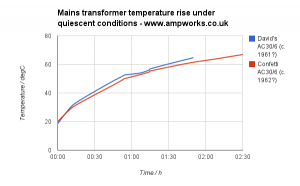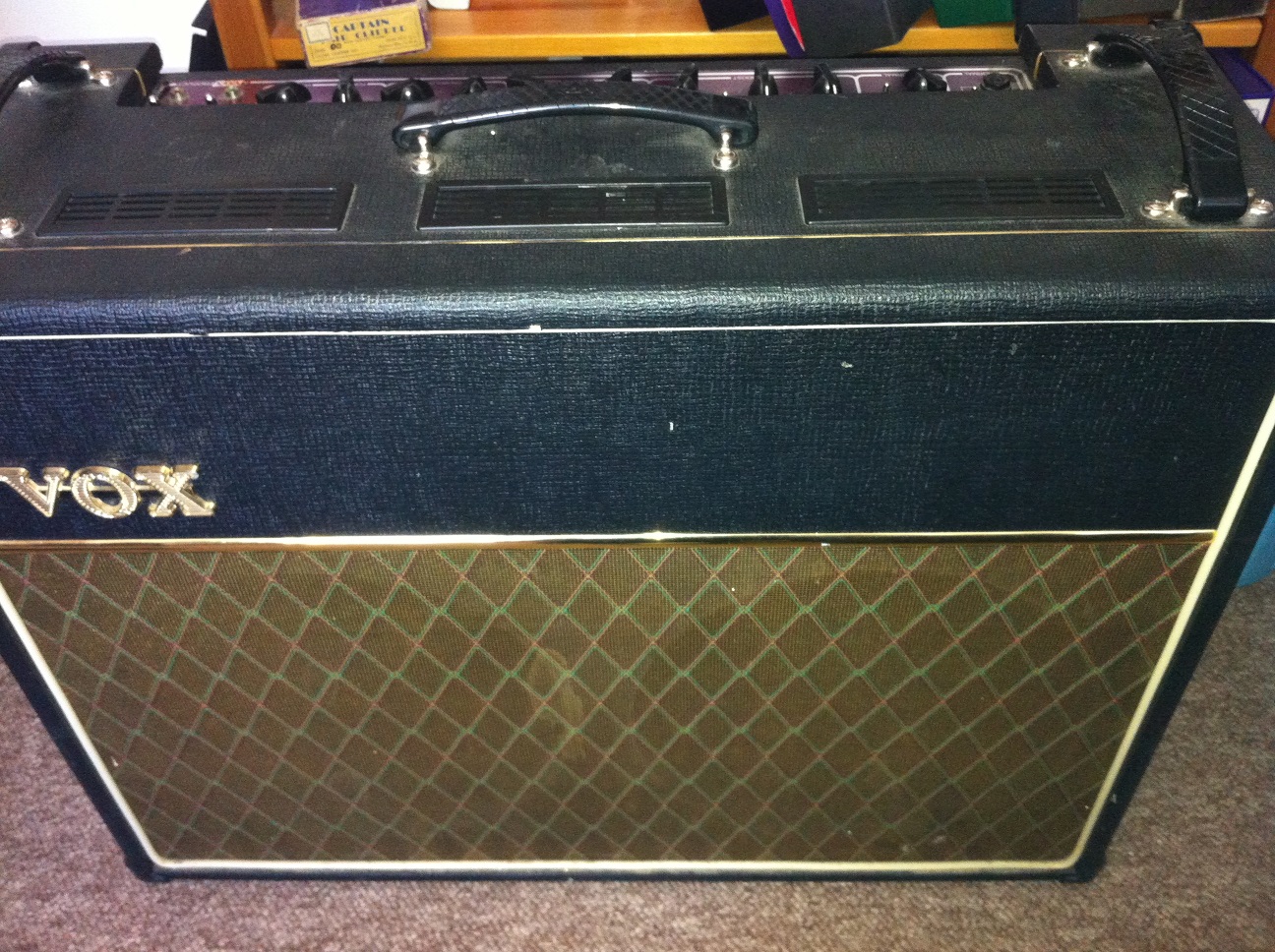Now, is it good things or bad things that come in threes? It must be good things. This was the third of three vintage vox ac30 repairs that came to me over a few weeks in summer 2015. Vintage amps have a particular smell and when there are 3 vintage vox amps in the workshop for repair you soon become very used to it!
This amp is probably the toughest repair job that I’ve worked on over the last 6 years. Another repair company in Lincolnshire, experienced with vintage amp repairs, had looked at the amp but had ultimately had to give up. I don’t really blame them.
This vintage Vox AC30 (there’s a picture of it on the 1961 vox page too) is I think a 1970s model. I’ve estimated it at 1973, with substantial modifications through the years. However, I’m an electronics geek, not an amp history geek, so I may be wrong. Someone who’s opened up the amp in the past has written “1978 ish ? 1986 as well, mostly ?” inside it. I judge it to be 1973 because the vox logo is a traditional VOX logo as used in the 60’s, but this could have been swapped during it’s lifetime. Early 1970s vintage Vox AC30s used PCBs too. STragely, this doesn’t look like any of the 70’s PCBs that I could find. So, the jury’s out on this one!
Some 70s vintage Vox AC30s came with reverb circuits, but this amp uses a solid state reverb circuit that I can’t find any record of in 70s amps. You can tell that the amp didn’t ever have a valve reverb because it’s a 10 valve unit. The ’78 reverb unit used 11 valves with the extra triode used to buffer the signal into the spring reverb and to make up gain after it. But the amp had a reverb market on the front panel, I assume this must have been fitted later.
I’ve spoken before of the peculiarities of doing amp repairs on guitar amps and other electronics is that the actual process of repairing can take just 5 minutes, but the fault replication and diagnostic period is often much much longer. This problem is made worse in situations when the problem disappears intermittently. This one would disappear as the amp warmed up, after 20min or so.
The fault turned out to be a loose turret connection between the normal preamp volume control and the phase inverter. The connection appeared to be physically intact with a good solder joint. Grounding the point through the pot appeared to have no effect. However when removing this turret it broke in two. There must have been solder holding the piece together, but not making a reliable connection.
After that was fixed, we decided to wire out the solid state reverb unit and return the unit to vintage AC30 spec by adding back in the LoGain input on the vintage channel. While doing this I noticed that someone who’d worked on the amp, probably whoever fitted the reverb had wired up the input jack wrongly, leaving the brilliant channel jack socket with a high resistance to ground at all times. This turned the unit into a pickup point and the amp was feeding back on its own at high treble settings, with no guitar plugged in. Nightmare! Anyway this was soon fixed.
When finished, this is easily one of the nicest sounding amps I’ve ever played. I love the way the Vintage Vox AC30 circuit distorts. It’s easy to see why it’s become a popular circuit for the likes of Dr Z, Trainwreck, Matchless, Bruno etc. to copy. You can see a bit of it in the quick video I did to celebrate it’s finish!
This vintage vox AC30 repair took a good deal of effort, and I was the second repairer to work on it, bit I’m glad to say that it is now fixed. If b you have a vintage vox AC30 and it’s in need of a bit of TLC, please so contact me via the contact page.





